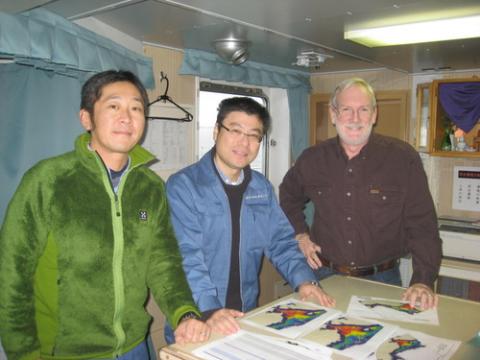The 2013 Arctic navigational season has not continued the recent trend of reduced ice cover that has been frequently reported by the media. This year we have experienced more, not less, ice. However, one measure using area only and not considering ice thickness ranks 2013 as the 6th least ice coverage on record. Paradoxically, during the last few years of reduced Arctic ice cover, and this year in particular, the Antarctic has been experiencing years of increased sea ice coverage. What does this mean to shipping? Whether one year is measured least or greatest is not what is important to shipping – what is important is that the ice is still here most of the time.
The season in which navigation in the polar regions can be completed by ships other than ice breakers are measured in weeks, not months with the Arctic and Antarctic completely covered by ice for eight to nine months of the year. Even during the brief navigation season, ice is still present and by virtue of its mobile nature remains a hazard the shipping. Ice can block routes that previously were open, forcing changes in plans and ETA’s which can challenge even the best-planned commercial venture. Ice may force ships off well-planned tracks, sometimes into uncharted waters or may require extraordinary manoeuvring amongst ice floes that can cause severe damage with one lapse of attention of the officer of the watch. Mariners experienced and skilled in ice operations are required to safely operate in these ice infested regions.
Those who have operated for many years in these regions, and insurers that cover their ships and cargoes, recognize that it requires mariners with particular skills, knowledge and competence gained over many years to command and operate their vessels in polar ice regimes. Those who have cavalierly ventured into these regions without the experience and knowledge necessary have suffered the consequences including ships damaged by ice, ships grounded in uncharted waters, ships trapped and beset for weeks when a simple diversion would have kept them clear of a deteriorating ice environment. It is not sufficient to throw a bridge officer into a weeklong training course with even 20 hours in a simulator and expect he will be able to tackle polar ice navigation safely or efficiently. That experience will clearly provide the mariner with a foundation, but it will not provide that mariner with the experience to identify hazardous conditions, anticipate situations strategically and tactically and make the best decisions for the safety of the ship, cargo and crew. Navigation in the polar regions is, and will remain for many years to come a challenge to shipping requiring highly experienced Ice Navigators.
Capt David (Duke) Snider
Ice Navigator
RV Mirai
Photo: Masatake Hori, Chief Scientist Shigeto Nishino and Ice Navigator Captain Duke Snider discuss changes to research plan required by changing ice conditions

